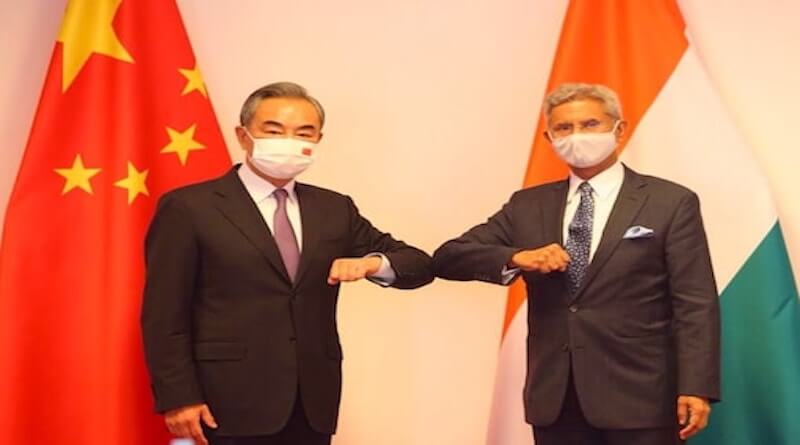India, China agrees prolongation of border standoff benefits neither side but differs on way forward

DHARAMSALA, 15 July: India’s External Affairs Minister S Jaishankar has stated that India and China both agreed that the prolongation of the existing situation in eastern Ladakh adversely affected the bilateral ties in a negative manner.
The external affairs minister made the remarks after an hour-long meeting with his Chinese counterpart Wang Yi on the sidelines of the Dushanbe SCO Foreign Ministers Meeting.
“Discussions focused on the outstanding issues along the LAC in the Western Sector,” Jaishankar tweeted after the meeting.
“The External Affairs Minister (EAM) recalled that both sides had agreed that a prolongation of the existing situation was not in the interest of either side. It was visibly impacting the relationship in a negative manner,” read a statement issued by the MEA.
The EAM has reportedly told China to follow through on the agreement reached at their last meeting in Moscow in 2020 and stated that “the attempts to change status quo last year that also disregarded commitments under the 1993 and 1996 agreements have inevitably affected ties” as he called for the complete the disengagement and resolving the remaining issues along the LAC in Eastern Ladakh at the earliest.
Though China’s Foreign Minister Wang Yi has agreed that “relations between India and China are still at a low point” and that the present border tension benefits neither, he has however said that in China’s view the boundary should be kept “in an appropriate place” and it should be addressed while “expanding” other “positive aspects” of the relationship, and that “the responsibility does not lie with China”, reports the Hindu.
As the border standoff between the two Asian giants has failed to boil down a year after the deadliest standoff between India and China in eastern Ladakh, New Delhi has taken several steps to ease tensions with Beijing while also asking the armed forces to be ready for any eventuality at the same time.
Multiple reports said last month that in a move that has been described as “offensive defence,” India has reportedly deployed 50,000 more troops at the Indo-China border over the past few months.
The two sides have withdrawn their troops and from the North and South banks of Pangong lake in February following a series of military and diplomatic talks while remaining deeply engaged in talks to extend the disengagement process to the remaining friction points.
The border dispute between India and China covers a 3,488-km-long Line of Actual Control (LAC).
The McMahon Line demarcation is the current effective boundary between China and India after the Chinese occupation of Tibet. It is a demarcation line drawn on the map referred to in the Shimla Accord, a treaty signed between Britain and Tibet in 1914.






